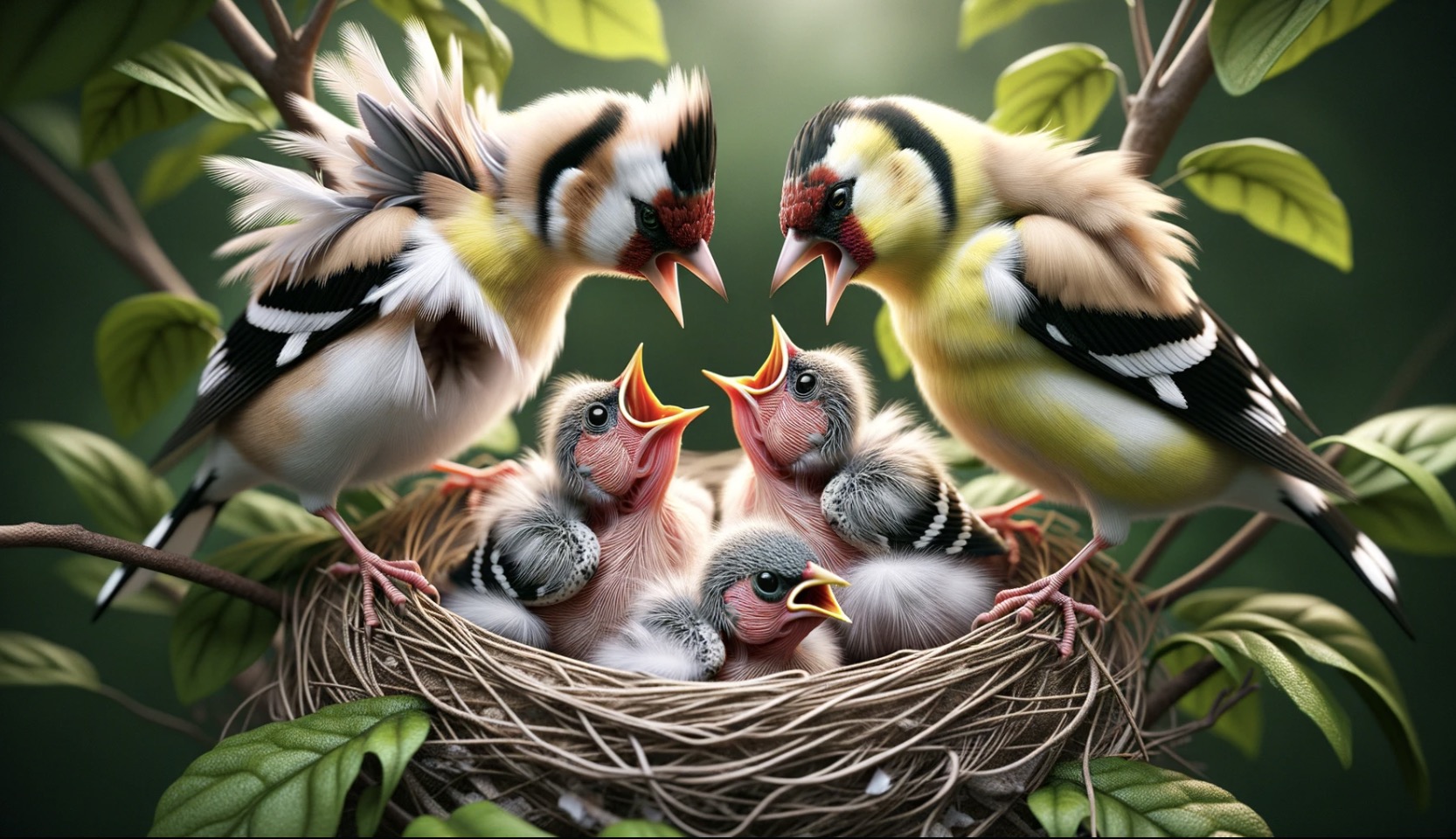In the vast tapestry of the avian world, the behaviors exhibited by birds, particularly their parenting tactics, can be surprising to even seasoned biologists.
Finches, small passerine birds with vibrant colors and endearing chirps, are no strangers to captivating the attention of enthusiasts and ornithologists alike.
Many are familiar with their striking appearance from woven fabrics where they often grace the patterns. But lurking beneath this benign exterior lies a pressing concern: Do finches kill their babies?
To put it succinctly: Yes, in certain situations, some finches may harm or even kill their offspring.
But the reasons behind such behavior are multifaceted and deeply rooted in evolutionary biology, environment, and individual circumstances. Studies estimate that a maximum of 2-5% of finch couples in the wild might exhibit this behavior annually.
Before we jump to conclusions, let’s delve deeper into the intricacies of finch behavior to better understand the context behind these actions.
Finch Parenting Behavior
Finches are generally considered good parents. In the wild, both male and female finches actively participate in building the nest, incubating the eggs, and feeding the chicks. Their dedicated parenting ensures the survival of their offspring in often unpredictable environments.
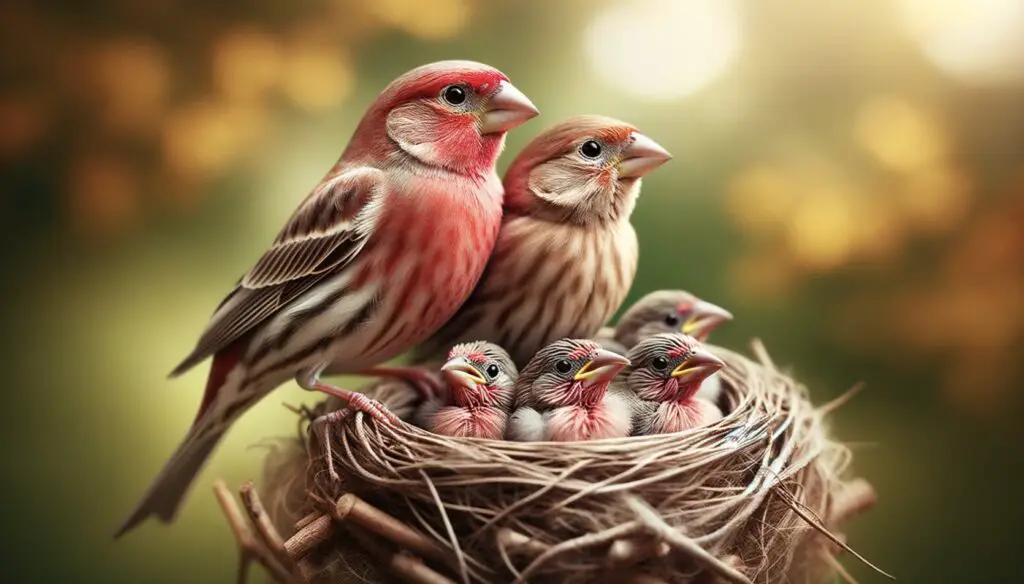
While many species of finches have evolved unique parenting strategies to cater to their specific habitats and threats, there are shared behaviors that underline their commitment to their young.
Common Misconceptions About Finches
Contrary to popular belief, finches are not inherently violent or malicious creatures. They, like all animals, are driven by instinct, survival needs, and environmental triggers. The majority of finch pairs successfully rear their offspring without any infanticidal tendencies.
However, this doesn’t mean they are immune to external pressures or internal challenges that might provoke adverse behaviors. Labeling them as ‘baby-killers’ without understanding the full scope of their behavior would be a disservice to these fascinating birds.
Why Would Finches Harm Their Offspring?
Competition for Limited Resources
Nature is inherently competitive. In environments where food or space is scarce, parents may be forced into a tragic dilemma: continue to feed and support a larger brood with dwindling resources or reduce the number of mouths to feed.
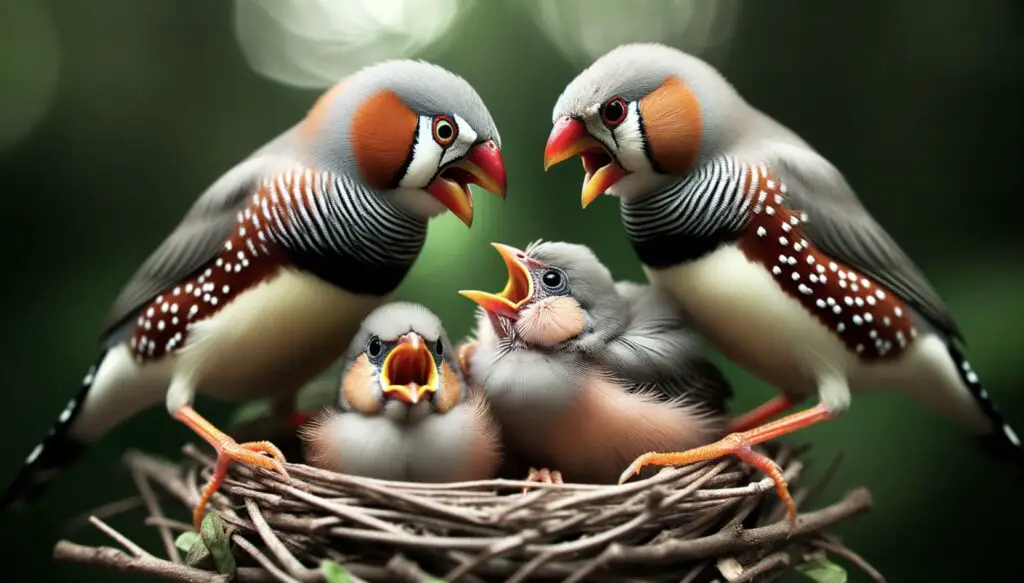
By doing the latter, they can ensure that at least some of their offspring survive. Such decisions, although brutal from a human perspective, are driven by a biological imperative to ensure the continuation of their genetic lineage.
Illness or Abnormalities in the Chick
Sometimes, finch parents may detect something amiss in one of their chicks – be it an illness, deformity, or weakness. In these cases, they might opt to abandon or even cull the affected chick. This is not out of cruelty but rather an evolutionary strategy.
By focusing their resources on the healthy chicks, they enhance the chances of raising offspring that can survive and reproduce in the wild.
Stress and Environmental Factors
Stress is a significant factor influencing bird behavior. Factors such as habitat disruption, presence of predators, extreme weather conditions, or even human interference can heighten stress levels in finches. Under extreme stress, their behavior can become erratic, leading to instances where they might harm their chicks inadvertently or deliberately.
Inexperience of Young Parents
Just like in humans, first-time finch parents might not always get everything right. Their inexperience can lead to mistakes, such as improper feeding, over-handling, or even aggressive behavior. Some young parents might become overwhelmed by the responsibilities, leading to unintentional harm to the chicks.
The Role of Nature vs. Nurture
Genetic Factors Influencing Aggression
Evolutionary biology provides insight into why certain behaviors manifest in the animal kingdom. Over millions of years, traits that favor survival and reproduction become more prevalent. In some cases, aggression or the propensity to cull weak or sickly offspring can be seen as an advantage from a genetic standpoint.
It’s not about cruelty but about ensuring that the strongest genes are passed on to future generations. In certain environments, aggression may be a genetically favored trait that increases an individual’s chances of reproductive success.
Environmental Triggers and Responses
While genetics play a role, environmental factors are equally crucial in shaping bird behaviors. Birds, like finches, are highly responsive to their surroundings.
When they perceive threats, whether it’s from predators, limited resources, or changing habitats, their behaviors adjust accordingly.
An environment abundant in resources with minimal threats will typically see harmonious parental behaviors. In contrast, a challenging environment may trigger aggressive or seemingly ‘cruel’ actions as a coping mechanism.
Myth vs. Reality: Setting the Record Straight
How Common Is This Behavior Really?
It’s essential to emphasize that while finch infanticide does occur, it’s not the norm. As mentioned earlier, studies indicate that only 2-5% of finch couples in the wild might show such tendencies annually.
The vast majority of finch pairs successfully rear their offspring without any harm. The occurrences of aggression or infanticide are typically outliers, influenced by a combination of genetic and environmental factors.
Differentiating Between Normal Parental Behavior and Aggression
Finches, like all birds, have a range of behaviors that might seem strange or aggressive to human observers but are perfectly natural. For instance, a finch might peck at a chick to stimulate it to feed or move. This shouldn’t be mistaken for aggression. It’s crucial for observers, especially those new to birdwatching or finch keeping, to familiarize themselves with typical finch behaviors to avoid misinterpretations.
Infanticide in Different Finch Species
Infanticide, the act of intentionally killing one’s offspring, is a behavior observed in various animal species, including some birds. While it can be shocking to human observers, it’s essential to view it within the evolutionary and ecological context of the species involved.
Within the diverse world of finches, the propensity and reasons for infanticide can vary across different species. Let’s delve deeper into how this phenomenon manifests in some of the more well-known finch species.
Zebra Finches
Zebra finches, popular in aviculture, have been observed to occasionally commit infanticide. Research has shown that male zebra finches, in particular, might resort to this behavior when paired with a new mate.
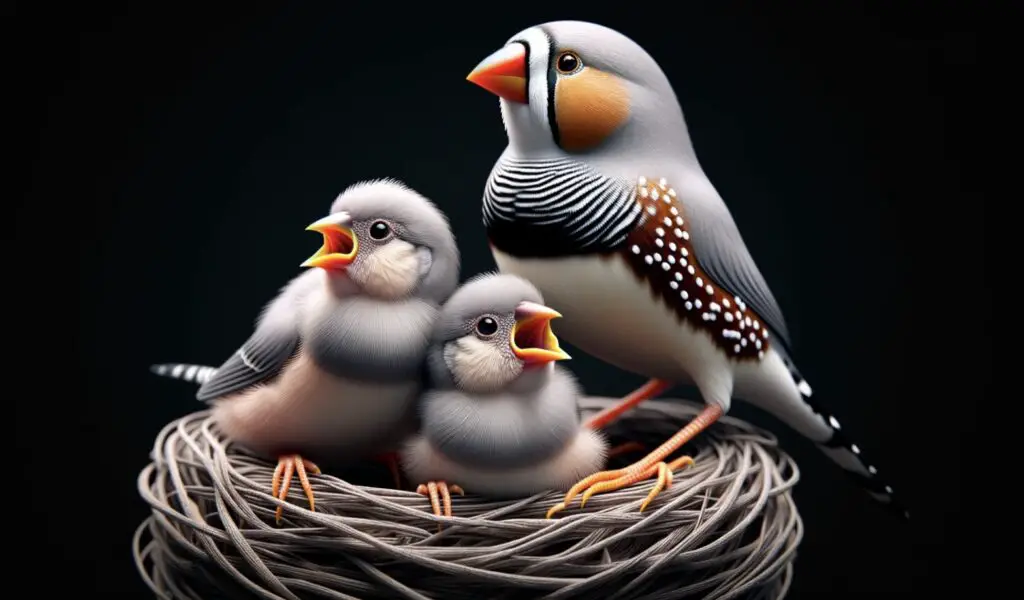
The hypothesis behind this is the “step-parent” effect, where the male eliminates offspring that aren’t biologically his to ensure the new mate invests in their shared future offspring.
Gouldian Finches
The Gouldian Finch, with its vibrant colors, is another species where infanticide, particularly brood reduction, has been documented.
These finches often lay more eggs than they can realistically rear. In instances where food is scarce, Gouldian Finches might prioritize feeding the stronger chicks, leading to the neglect and eventual death of the weaker ones.
This is a survival strategy, ensuring that at least some offspring survive in resource-poor conditions.
House Finches
House finches, commonly found across North America, have been observed to occasionally engage in infanticide.
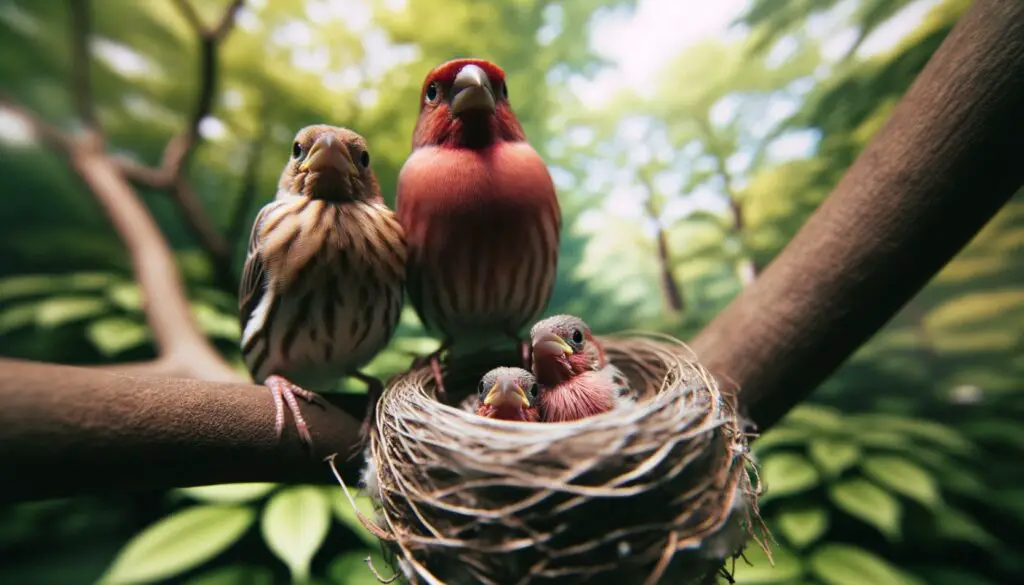
One theory suggests that this behavior might be influenced by environmental stressors. For instance, a sudden decrease in food availability can lead parents to reduce the number of mouths to feed.
Bengalese Finches (Society Finches)
While Bengalese finches or Society finches are generally known to be good parents and even foster parents for other species, there are rare instances of infanticide. These occurrences, though infrequent, might be related to the inexperience of young parents or external stressors like disturbances and changes in their environment.
Goldfinches
Goldfinches are known for their bright yellow plumage and melodious songs, making them a favorite among bird enthusiasts in North America and Europe. When it comes to parental behaviors, Goldfinches are typically diligent and attentive.
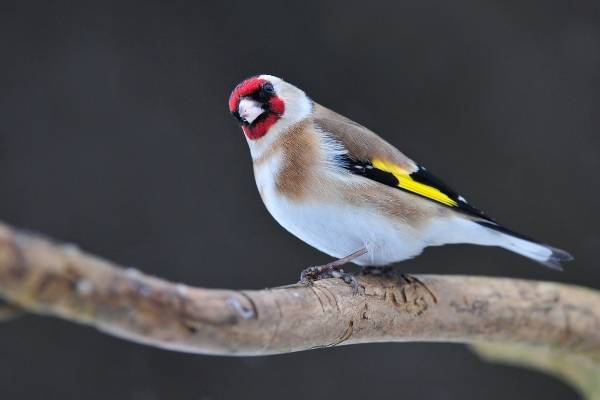
However, like other bird species, Goldfinches are not immune to instances of infanticide. It’s worth noting that such behavior in Goldfinches is relatively rare. When it does occur, it’s often influenced by external stressors. For example, if a nesting site is continually disturbed, Goldfinches may abandon the nest or, in extreme cases, harm their chicks.
Another scenario observed among some bird species, including Goldfinches, is when a male, upon finding a nest with eggs or chicks he didn’t father, might engage in infanticide. This behavior is believed to be a strategy to ensure that the female, free from her previous brood’s responsibility, becomes receptive to mating again, thus allowing the male to pass on his genes.
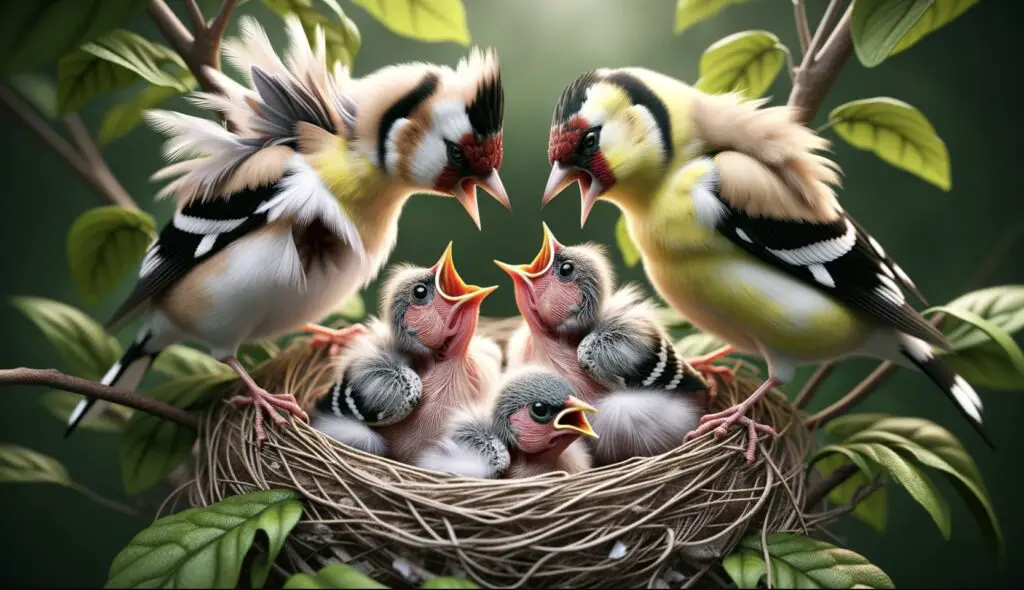
It’s also essential to differentiate between deliberate infanticide and the inadvertent harm that might be caused due to the inexperience of first-time Goldfinch parents. Young pairs might not be as adept at feeding or protecting their chicks, leading to higher mortality rates. However, this shouldn’t be mistaken for intentional harm.
As with other finch species, understanding the specific circumstances and environmental pressures is crucial when interpreting behaviors like infanticide among Goldfinches. And it’s always essential to remember that such occurrences, while unsettling, represent a small fraction of the overall parenting behaviors of these beautiful birds.
Canaries
Though not technically finches, canaries are closely related and share many behaviors with them. Infanticide in canaries, like in many finch species, is not common but can occur due to factors like overcrowding, stress, or inexperienced parents.
In conclusion, while infanticide does occur in some finch species, it’s essential to emphasize that it’s not a widespread or common behavior.
It’s usually an adaptive response to specific challenges or pressures. Understanding the nuances of each species and the factors influencing their behavior can provide a more comprehensive view of this complex phenomenon.
Ways to Support and Protect Baby Finches
Providing Adequate Space and Resources
For those who keep finches in captivity, ensuring that they have ample space is crucial. Overcrowding can lead to increased stress and competition, which might result in aggressive behaviors. Providing a well-balanced diet, plenty of water, and nesting materials can also help mitigate potential issues.
Monitoring and Intervening When Necessary
Constant observation is key. If you notice any signs of aggression, it might be necessary to separate the aggressive bird from the rest. In cases of extreme aggression, consulting with an avian veterinarian or bird behaviorist is advisable.
Enhancing Finch Welfare in Captivity
For captive finches to thrive, their environment should mimic their natural habitat as closely as possible. This includes providing opportunities for flight, foraging, and social interactions. Additionally, toys, perches, and other enrichment items can help keep them mentally stimulated and reduce stress.
Conclusion
In the intricate dance of nature, every behavior, no matter how perplexing to humans, has a place and purpose. Finches, with their vibrant personalities and complex behaviors, remind us of the delicate balance of nature.
While instances of them harming their offspring can be jarring, it’s crucial to view these actions within the broader context of survival, adaptation, and evolution. As observers and caretakers, our role is to understand, protect, and ensure the well-being of these remarkable birds.
Frequently Asked Questions (FAQs)
How can I distinguish between playful pecking and aggressive behavior in finches?
A: Playful pecking is often light and occurs during social interactions. It’s common among young finches or between mates. Aggressive pecking, on the other hand, is more forceful and is accompanied by signs of distress such as rapid flapping, loud distress calls, or attempts to escape. Observing the context and the reactions of the other bird can give you a clearer idea.
If a finch has displayed aggressive behavior once, will it do so again in the future?
A: Not necessarily. Aggressive behavior might be a response to a specific trigger or stressor. Once the underlying issue is addressed, the finch might not display such behavior again. However, constant monitoring is advised.
Are certain species of finches more prone to this behavior than others?
A: There is some variability between species, but generally, the factors influencing such behaviors are environmental or related to individual circumstances rather than species-specific tendencies.
I have multiple finches. Should I be concerned about them harming each other’s offspring?
A: While finches can be territorial, especially during breeding seasons, they typically don’t harm other pairs’ chicks. Ensure that each pair has sufficient space and resources to reduce potential conflicts.
How can I ensure my finches are stress-free in captivity?
A: Regularly change their environment by rotating toys, perches, and introducing new enrichment items. Play soft bird sounds, ensure their cage is in a location free from loud noises or sudden movements, and maintain a consistent light-dark cycle to mimic natural day-night rhythms.
What should I do if I find an abandoned finch chick?
A: If you’re certain the chick is abandoned and not merely left temporarily while the parents are foraging, you can try to care for it by keeping it warm and feeding it specialized bird formula available at pet stores. However, consulting an avian veterinarian or wildlife rescue center is highly recommended.
Is it advisable to introduce a new mate for a finch that has previously shown aggressive behavior towards its offspring?
A: Introducing a new mate can be done, but it’s essential to monitor their interactions closely. If the previous aggressive behavior was due to stress or environmental factors, addressing those might prevent recurrence with a new mate. Always introduce birds in a neutral environment to reduce territorial aggression.
Can finches recognize their own offspring after they’ve matured and left the nest?
A: Finches have a good memory and can recognize individual birds, including their offspring, based on their calls and interactions. However, the strength and nature of their relationships might change as the chicks mature and become independent.

